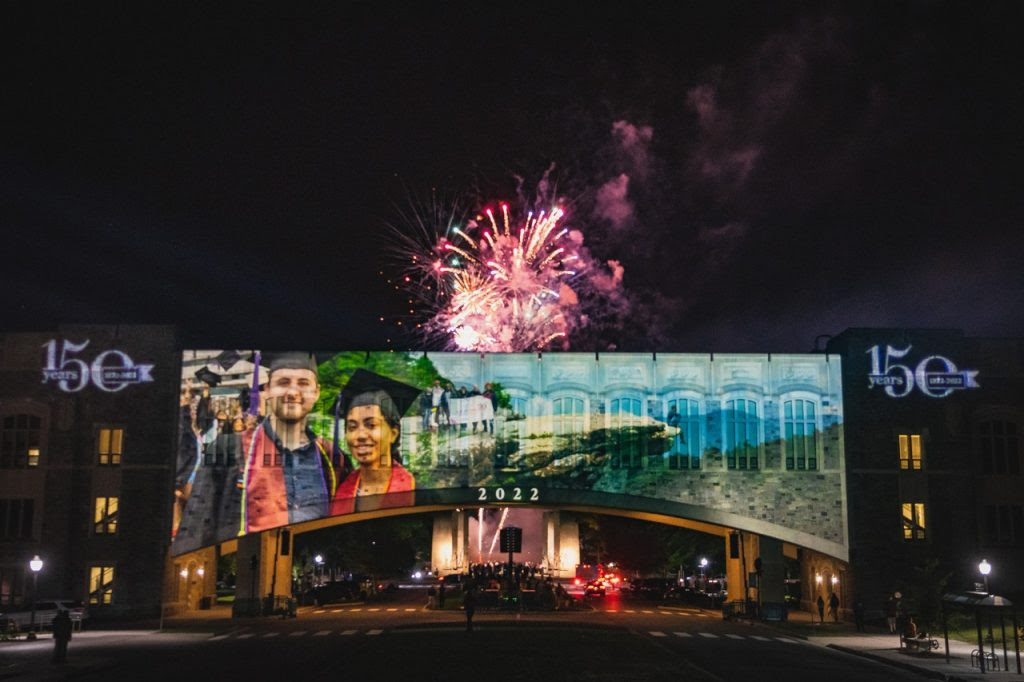
Hundreds of people paused to witness a bridge to Virginia Tech’s history during Homecoming weekend.
The Institute for Creativity, Arts, and Technology (ICAT) collaborated with the university’s Communications and Marketing unit to create a projection on Torgersen Bridge that explored Virginia Tech’s past 150 years through images and sound.
“It was nice to see the progression of the university and the change in diversity,” said Del Herr, Virginia Tech sophomore. “In the 1920s, you start to see women come into the projection, more races, and diverse people.”
The projection spanned across the 140-foot bridge. Displaying a series of vignettes representing important moments from the university’s history created from about 300 images, the 30-minute piece played in a loop after dark on Oct. 14, 15, and 16.
On those same days, the projection also appeared in the Moss Arts Center Cube. With its 128-speaker system, the Cube offered an immersive viewing experience.
The idea of the project stemmed from the book “No Ordinary Moment: Virginia Tech, 150 Years in 150 Images” released by Special Collections and University Libraries, said Ethan Candelario, the Communications and Marketing motion designer who worked on the projection. “No Ordinary Moment” is a collection of 150 pictures that show Virginia Tech’s history from the beginning to modern day. Candelario said he envisioned an adaptation of this book to put on the bridge.
“It is one thing to see pictures in a book and to read individual stories. It is another thing to see and hear the history evolve,” Candelario said.
Candelario spent long hours sifting through alumni scrapbooks, Special Collections archives, and the digital resources to come up with enough images to cover 150 years. Although going through the images proved to be his favorite part of the production process, Candelario described the first time he saw his visuals connect with the music as awesome.
The production incorporated Virginia Tech students. Carter Roberts developed audio to accompany the visuals. “I wanted to produce a sense of realism and make people feel like they are there,” said Roberts, a sophomore with a double major in creative technologies in music and the professional technical writing program.
Roberts processed all the audio to properly suit the time period. For example, some songs were altered to sound as if they were playing on an old tape recorder. Viewers may also have noticed sounds such as construction to depict the university’s growth through the years, music styles becoming less acoustic through the years, and the voices of some of the university’s most recognizable faculty.
Many parts of the project took a significant amount of time. David Franusich, multimedia designer for ICAT, said the actual work started in February, despite earlier discussions.
Candelario spent considerable time working by himself, adding elements he knew viewers would want to see, such as football, the marching band, and downtown scenes. He cut out parts of about 300 individual images in Photoshop then assembled them all together. The 30-minute video took about 36 hours to render from start to finish. “You kind of have to start a render on a Friday afternoon and hope that everything looks good when you come back on Monday,” Candelario said.


